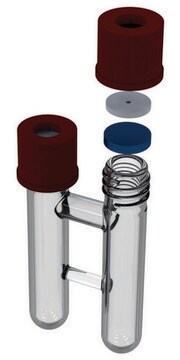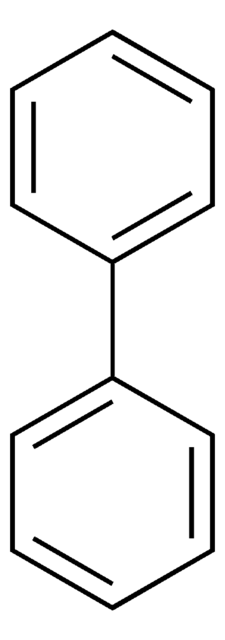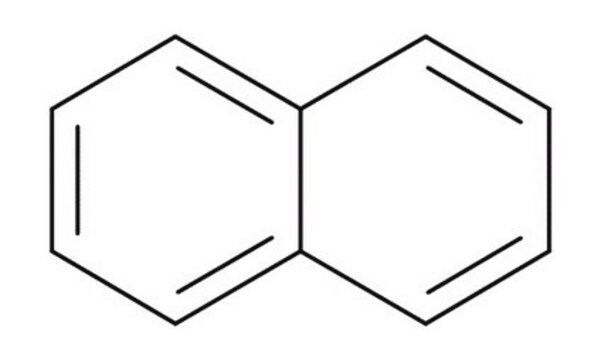01422
Melting point standard 79-81°C
analytical standard
Sinônimo(s):
Naphthalene
About This Item
Produtos recomendados
grau
analytical standard
Nível de qualidade
densidade de vapor
4.4 (vs air)
pressão de vapor
0.03 mmHg ( 25 °C)
temperatura de autoignição
978 °F
prazo de validade
limited shelf life, expiry date on the label
Lim. expl.
5.9 %
pb
218 °C (lit.)
pf
79-81 °C (±0.3°C)
80-82 °C (lit.)
aplicação(ões)
food and beverages
pharmaceutical
cadeia de caracteres SMILES
c1ccc2ccccc2c1
InChI
1S/C10H8/c1-2-6-10-8-4-3-7-9(10)5-1/h1-8H
chave InChI
UFWIBTONFRDIAS-UHFFFAOYSA-N
Procurando produtos similares? Visita Guia de comparação de produtos
Descrição geral
Aplicação
Additionally, this mp standard is also used as a temperature calibration standard in thermal studies.
Características e benefícios
- Melting point calibration standard traceable to primary standards (LGC, London)
- Grade: Analytical Standard
- Standard deviation up to ± 0.3 °C
- Provided with certificates of analysis and safety data sheet
Palavra indicadora
Warning
Frases de perigo
Declarações de precaução
Classificações de perigo
Acute Tox. 4 Oral - Aquatic Acute 1 - Aquatic Chronic 1 - Carc. 2 - Flam. Sol. 2
Código de classe de armazenamento
4.1B - Flammable solid hazardous materials
Classe de risco de água (WGK)
WGK 3
Ponto de fulgor (°F)
173.3 °F - closed cup
Ponto de fulgor (°C)
78.5 °C - closed cup
Equipamento de proteção individual
Eyeshields, Faceshields, Gloves, type P3 (EN 143) respirator cartridges
Escolha uma das versões mais recentes:
Já possui este produto?
Encontre a documentação dos produtos que você adquiriu recentemente na biblioteca de documentos.
Os clientes também visualizaram
Protocolos
GC Analysis of PAHs on SLB®-5ms
US EPA Method 610 describes the analysis of polynuclear aromatic hydrocarbons (commonly referred to as PAHs or PNAs) by both HPLC and GC.
-Xylene; Nonane; Decane; 1,2,4-Trimethylbenzene; Butylcyclohexane; Naphthalene
HPLC Analysis of PAHs on SUPELCOSIL™ LC-PAH
Nossa equipe de cientistas tem experiência em todas as áreas de pesquisa, incluindo Life Sciences, ciência de materiais, síntese química, cromatografia, química analítica e muitas outras.
Entre em contato com a assistência técnica












